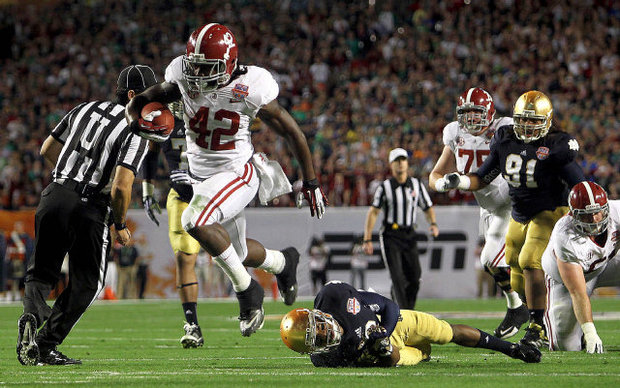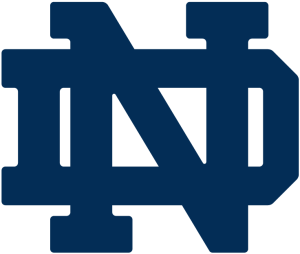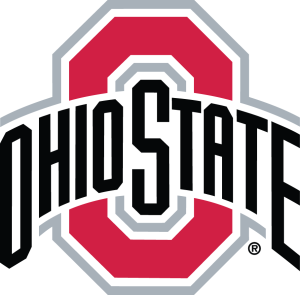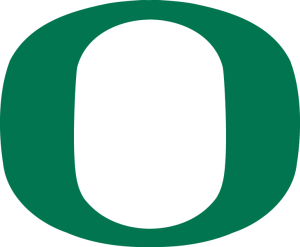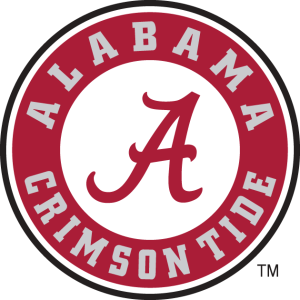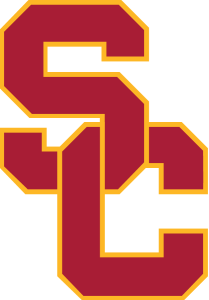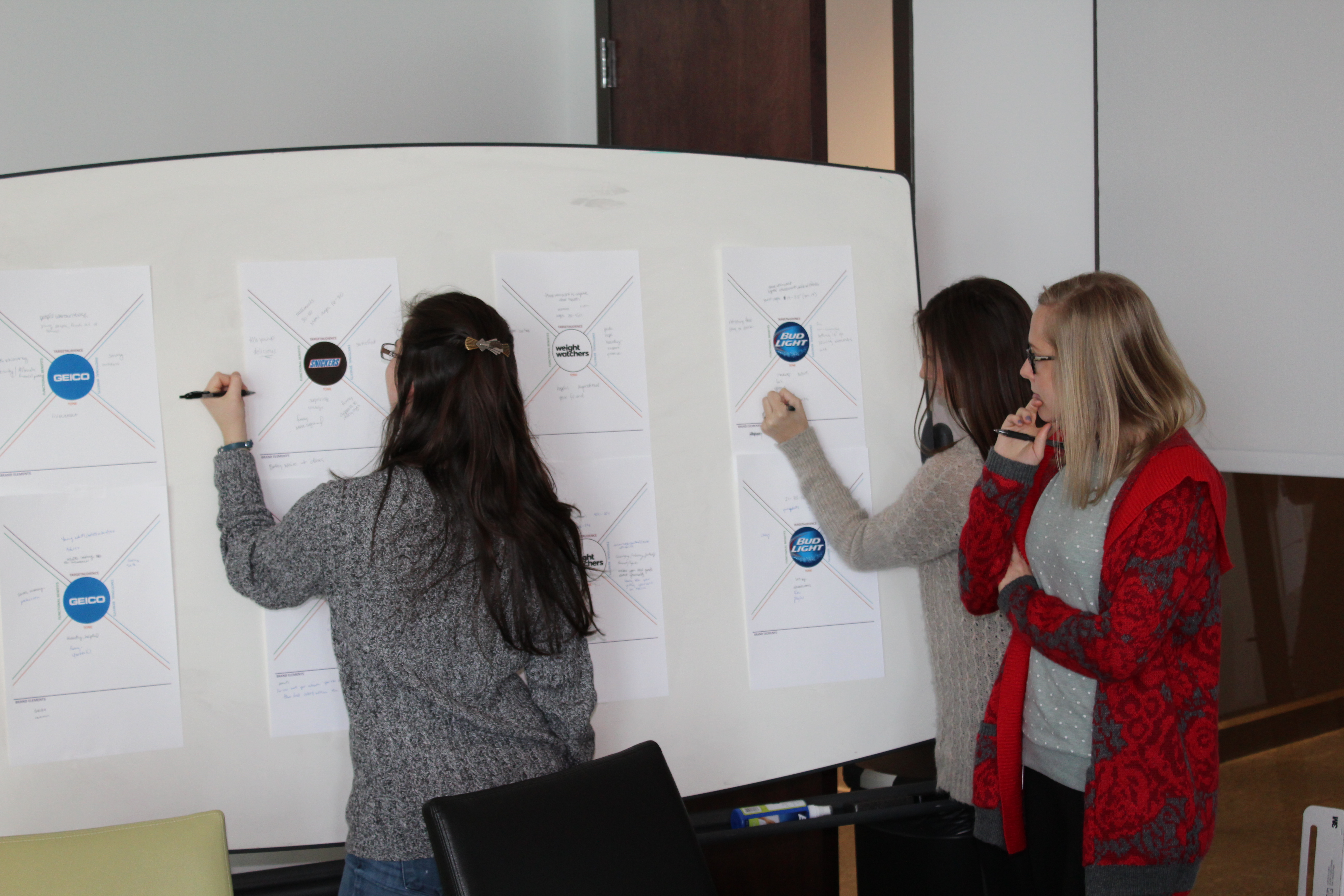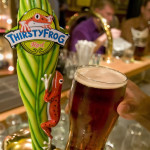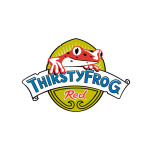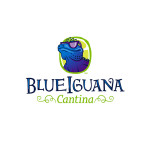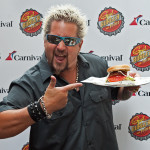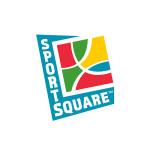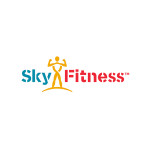Branding Cinderella - How March Madness Success Grows Small School Brands
Up until 2008, tiny Davidson College in Davidson, N.C. was little-known to most outside of the local population and a few die-hard basketball fans who remember the school’s glory days on the court in 1960s. But over a few days in March of that year, the Wildcats, led by future NBA MVP Stephen Curry, made a miraculous run all the way to the Elite Eight of the NCAA men’s college basketball tournament.
Almost overnight, the 1,800-student school was on the national radar, and its brand experienced a boom in exposure that many smaller institutions would love to have.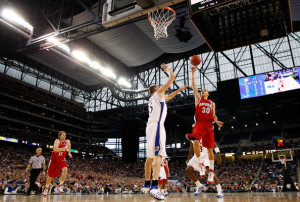
For these schools, national exposure comes along very rarely (if ever), often in the form of the football team going to a bowl game, an academic breakthrough or, at the top of the exposure list, an invite into the exposure behemoth that is March Madness.
What takes an entire season of success coupled with an unblemished run through their conference tournament culminates in hearing their name called on Selection Sunday (another branded term) and a spot on the bracket. This inclusion provides a seat at the table and in the tens millions of brackets printed, researched, debated, analyzed, filled out and monitored by people around the world.
What better time to build your brand, especially if you are in the middle of a major rebrand and are looking to push your new name/logo forward into mainstream use?
The University of Arkansas at Little Rock (UALR for short) – a school with a self-admitted long-winded name – recently went through a rebranding effort, which included changing its athletic teams naming from the UALR Trojans to simply the Little Rock Trojans. Gone is the University of Arkansas precursor, and here to stay is more of a focus on the school’s home city. The new branding efforts also included updated logos, uniforms, websites, font choices and many more brand elements that are familiar to a corporate rebrand.
What to learn more about how you can build your brand? Let's talk.
Then their men’s basketball team went out and did the new brand the biggest favor it could – steamrolling through the Sun Belt conference regular season and tournament to lock in a spot in the 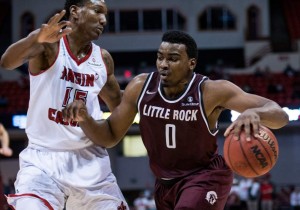 Big Dance, guaranteeing that those brackets would all include the words “Little Rock” when referring to the school. This not only gained exposure for the new brand, but also helped to quicken the old UALR branding into the history books.
Big Dance, guaranteeing that those brackets would all include the words “Little Rock” when referring to the school. This not only gained exposure for the new brand, but also helped to quicken the old UALR branding into the history books.
The benefits aren’t just to the long-term branding success of the schools. Immediate (and long lasting) financial growth is a common side effect of an appearance in the tournament, which is increased substantially with each round of advancement for the team.
Millions of dollars are distributed by the NCAA to individual conferences based on the success of their member institutions, in addition to the uptick in sponsorships, ticket and merchandise sales, donations and licensing deals. For some schools, a single trip deep into the tournament can help fund their athletic programs for years to come – and this is all in addition to the increase in brand awareness.
So as you fill out your bracket and watch this year’s tournament, keep in mind those schools who you are seeing for the first time, and appreciate their time in the branding spotlight.
Addison Whitney is a global branding firm with a passion for building strong brands.
To learn more about Addison Whitney, visit our website at AddisonWhitney.com, or contact us here.
College Football’s Top 5 Brands
College football is a big-time player in the American sports scene, with billions of dollars spent and millions of fans heading to the stadium each weekend. With this enormous influence in our sports culture comes the emergence once again of brands who rival the biggest corporations in the world in terms of their brand equity.
With this list, I attempt to rank the top five brands in college football today – and as with any list, there is sure to be some friendly disagreement on who is on the list, where they are ranked and who I snubbed. I looked at the brands who are the first to come to mind when thinking of the sport in general, for whatever reason – and those reasons were varied.
One constant that is seen throughout this list is a high level of on-field success – in fact, there are a combined 45 national championships and over 4,000 all-time wins claimed by the schools on this list. While wins and losses alone don’t determine a strong brand, success does bring an ease to the branding process – people want to associate with winning teams, and they have more attachment to the overall brand when they come out on top more often than not.
However, winning was not the only factor in determining brand strength, but it was a benefit for those brands who have experienced more wins that losses throughout their histories.
The gold helmets. Touchdown Jesus. Notre Dame Stadium. The list of iconic brand elements could go on for the Irish, and that doesn’t even include the millions of fans around the world (and the millions of those who root against the team).
Notre Dame’s branding efforts correctly center on their many traditional and well-recognized aspects, which provide a link to their successful past (11 national championships and a record seven Heisman trophy winners), and proof of their relevance across cultural and generational bounds. No matter their record, interest in Notre Dame remains at the top of the list, as does their brand.
According to a recent report, Ohio State’s football program is worth over $1 billion, which is far and away the most valuable program in the nation. This brand valuation is a key force in driving the strength of their overall brand, providing a wealth (pun intended) of exposure, top-rate facilities, opening new revenue streams and allowing the school to put monetary support behind the football brand strategies necessary to keep them at the top.
They are the flagship school in a football-crazed state and an alumni base that crosses the globe, helping expand the brand equity outside of the Buckeye State borders. The combination of outstanding monetary support and brand awareness with the spoils that come with being the defending national champion have helped the Ohio State brand continue to excel.
At the opposite end of the spectrum of brand strategy from Notre Dame is the University of Oregon Ducks. Where they lack in years of success and iconic brand symbols they make up for in and instantly recognizable visual brand portfolio.
Oregon is capitalizing on their strong visual branding elements to build their brand strategy about how they look – completely with a full set of flashy uniforms that seem to change every week. They highlight their visual elements in all aspect of their brand strategy, from recruiting to marketing to the game day experience.
Alabama is one of the top representations of the power of brand advocates. Located in a state with no professional sports teams but a love of college football that is almost unsurpassed in the entire nation, Alabama has built a loyal fan base that carries its brand near the top of any rankings.
Despite their recent dominance, there were some stretches where the on-the-field product wasn’t top notch, but the loyalty of their brand fans did not waver, showing how strong the brand has ingrained itself in the people in their fan base.
When the three-lettered abbreviation for your school name carries as much verbal branding weight as any other full-named team in the country, that’s not a bad place to start when describing the strength of your brand.
The University of Southern California – USC – has long carried the torch for the west coast in the college football world. They have about as close to the perfect ingredients for the perfect brand as one school can get, where they can pull from years of success on the field, an idyllic location in the heart of Los Angeles, a famous logo and color scheme, prominent alumni and many more.
Image Sources
All Logos
Featured Image
Addison Whitney is a global branding firm with a passion for building strong brands.
To learn more about Addison Whitney, visit our website at AddisonWhitney.com, or contact us here.
4 Ways Brands Can Top the Class in Back-to-School Branding
The days are getting shorter, there’s a chill in the air (at least for some of us) and football is back on the TV. That can mean one thing – be ready for the return of school buses during your morning 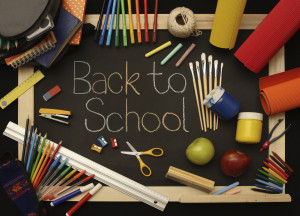 commute and a flood of back-to-school ads coming your way.
commute and a flood of back-to-school ads coming your way.
Back-to-school marketing and branding have graduated (it wouldn’t be right to not throw in a few school references) to big-time status in recent years. What used to consist mostly of stores putting their lunch boxes and notebooks on sale has turned into a major opportunity for companies to brand an entire time of the year.
The numbers speak for themselves – according to a recent report, in 2014 alone, back-to-school spending reached nearly $75 billion, with an average per-family spending for K-12 students coming in at $669.29. With that type of consumer activity and the area for opportunity that exists for brands to become a part of the experience, a strong branding strategy should be the first lesson for brands.
So, sharpen your pencils - here are four examples of how various brands can get an A+ (the last one, I promise) in back-to-school branding:
- Let Your Strengths Shine. For some brands, this time of year is ideal for reaffirming an already strong brand position. For brands like Elmer’s Glue, Bic and Crayola, the knowledge that consumers will instantly recognize their brand when doing their back-to-school shopping allows them to bypass the normal starter brand strategies and focus on highlighting their timeless products and classic brand characteristics. Among the mass of available supplies lining the store shelves, even the smallest brand equity can go a long way
- Stand Out from the Crowd. When it comes to brands that are looking to make a mark in this space but don’t have the built-in recognition needed to put their product branding at the forefront, the focus should their brand strategy around their uniqueness and differentiating qualities. Whether it is a new technology or a standout design, figure out how to make the consumer pause on your brand when scanning the shelves.
- Know Your Audience. Not every student is the same, and neither is every consumer situation. For brands, cutting through the clutter and giving their brand messaging a chance to succeed is driven first and foremost by knowing to whom they are speaking. Is your brand one that resonates with college students? Then highlight how the brand can help that make the dorm room shine. Is your fan a hit among kindergarteners? Brand yourself to speak to them and their parents, who will be making most of the buying decisions.
- Capture the Spirit of the Season. Back-to-school is full of hope, anticipation and excitement. Make sure your brand strategy fits these emotions. While the inevitable end of summer can be a sad proposition for a child, the chance for a new year and new adventures is what is going to drive their excitement about school – and if a brand is positioned correctly, their excitement about that brand.
Image Source
https://englishlanding.parkhill.k12.mo.us/cms/One.aspx?portalId=551269&pageId=3967745
Addison Whitney is a global branding firm with a passion for building strong brands.
To learn more about Addison Whitney, visit our website at AddisonWhitney.com, or contact us here.
One Brand Family, Two Brands, How Many Brand Messages?
As we all know, advertising during the Super Bowl is the biggest decision for a brand’s marketing strategy of the year. It regularly ranks among the most-watched television events in history (this year’s edition actually broke the record for most TV viewers for any program ever), and as such the money and spotlight on the commercials has grown just as big.
Audiences wait all year to see what ideas the participating brands come up with, and these choices are discussed, analyzed and critiqued almost as much as the game.
The pressure is enough for just those who were marketing just one brand at the game. For some, it was doubled, as they had two separate brands, which lived under the same brand umbrella, with advertisements running during this time.
The trick for brand managers in this situation is to decide whether to combine the two brands to support one brand message, or to establish dual messages and ensure that both are well-received and successful in their goals.
Popular opinion seems to fall on the side of dual messaging, in order to provide clarity from a larger brand strategy and brand equity standpoint. A well-defined branding message is some of the most valuable currency for advertisers and marketers, and brand-specific messaging is a shortcut to success in the area.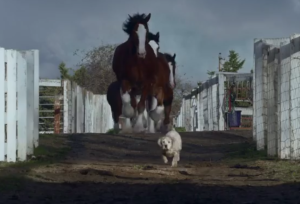
For instance, the Super Bowl commercials for Budweiser and Bud Light struck almost polar opposite messages from each other. These are two products that share numerous similarities, but when it comes to their brand strategies, they havechosen to take paths that best represent who they are and who they want to become.
Budweiser’s Clydesdales made their annual appearance, and helped to tell a heartwarming story of redemption and coming home with a puppy and his owner. On the other hand, Bug Light continued its “Up for Anything” campaign featuring a group of young partygoers and a life-sized Pac-Man game.
These two spots could not have hit on more different levels emotionally, which was the goal. A consumer will rarely confuse who each brand is, and who their ads were targeting.
One factor that plays into the target of the ad is the audience for the brand. In the Budweiser/Bud Light example, they are targeting different audiences, and therefore the brand strategy  and messaging reflects this.
and messaging reflects this.
It is a foundational aspect of branding – decide who you are, decide who you are speaking to, and adjust accordingly. For Bud Light to attempt and copy Budweiser’s Super Bowl commercial messaging of relationships, emotional connections and loyalty would completely change how the brand is viewed and would have the potential to do more harm than good.
When a consumer decides what a brand’s image is, changing can be a risky endeavor. For two brands that fall in the same family, both should have already carved out their niche and decided who would live where in the brand space. Crossing over would be seen as unauthentic and an attempt to grab an audience with whom the brand has no equity.
When faced with (possibly enviable) problem of having a pair of brands to showcase on branding’s biggest night, band managers and strategists can’t get can’t and forget the brand’s long-term future and direction. Having brand-specific messaging can build to a larger strategy, which will give more weight to the ads themselves, and provide a bigger bang for your buck.
Image Sources:
Addison Whitney Brand Fanatics Put a Twist on Super Bowl Ad Discussion
As brand fanatics, the Monday after the Super Bowl is an event on its own for us here at Addison Whitney. We love branding, and the Super Bowl commercials are the biggest stage for brands to get their message out, and give them an opportunity to make a lasting brand impact.
Since we knew that there would be countless conversations reacting to how well the brands accomplished this feat, we decided to provide a forum for these discussions to take place, as well as give the participants a chance to look at the ads from a branding perspective, something Addison Whitney specializes in.
In the first of what is expected to be many lunchtime discussion sessions, a group of Addison Whitney brand fanatics gathered to discuss how Super Bowl commercials had impact on branding.
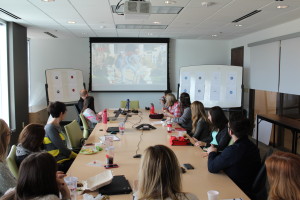 Six specific brands were identified as good representatives of the types of brand who have the potential to have the most impact from a Super Bowl ad, and their commercials from this year’s game were used as the ad reference.
Six specific brands were identified as good representatives of the types of brand who have the potential to have the most impact from a Super Bowl ad, and their commercials from this year’s game were used as the ad reference.
Our first step was to identify how we feel about the brands prior to viewing the ads – as in, if we were to be asked about these brands last week, what would we say?
For each brand, five brand characteristics were identified – Target Audience, Functional Benefits, Emotional Benefits, Tone and Brand Elements. Each section gave a deeper picture into who the brands are to us, and where were see them fitting into the brand landscape.
Participants filled out what came to mind for each of the targeted brands when they were asked to identify these characteristics, giving a foundational look at where the brands stood in the minds of most consumers, and where the starting point was for each of their Super Bowl commercials.
Of the characteristics, Target Audience and Emotional Benefits were singled out as the two that seemed to drive most Super Bowl advertising, and the two that had the largest potential brand impact.
Following this pre-ad discussion, the commercials from each of the brands were viewed to provide reference for the next stage of the discussion.
In a new twist to the normal commercial reaction discussion, in addition to discussing the commercial themselves, we looked at how the commercials tied back into the brands and if they effected any of the characteristics that were 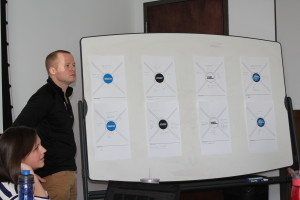 identified pre-viewing.
identified pre-viewing.
It is often an overlooked aspect of Super Bowl advertising, where much of the attention is paid to what ads performed the best on that one night in a vacuum where they were only competing against the next 30-second spot, is how the ads are part of a larger branding strategy for the companies.
For instance, our brand discussion examined how the Weight Watchers commercial signaled a new direction in their branding, moving away from the normal and established strategy to a strategy that was more direct and targeted at a new audience set.
Stay tuned in the next couple of weeks for a number of in-depth perspectives and analysis on these questions and more on how brands use such a high-profile platform and how those actions impact brand strategy!
Addison Whitney is a global branding firm with a passion for building strong brands. We specialize in verbal and visual branding, brand strategy and market research.
To learn more about Addison Whitney, visit our website at www.AddisonWhitney.com, or contact us here.
Four Trends That Will Help Shape Branding in 2015
With each new year comes a wave of trends and ideas that will define that year in branding and will shape how branding evolves. While some of these ideas showcase new ways of thinking about branding, others show the circular nature  of the industry and how sometimes, you have to look back in order to move forward.
of the industry and how sometimes, you have to look back in order to move forward.
Below is a look at four trends that will drive branding strategy in 2015:
- Cross-Platform Branding Becomes a Must-Have
Gone are the days when branding meant creating a name and a static logo for the brand. In today’s mobile, online, constantly-shifting platform-driven world, your visual needs to be adaptable to all areas in which you will be present.
Logos need to transfer from a magazine ad to a tablet, from a business card to a phone. Small, intricate details or trying to put a lot of information into one logo may look good when rendered on a large scale, but get lost when it is shrunk down for another use. This will contribute to an increase in logos that embrace simplicity, with companies considering eliminating aspects of their logos deemed detrimental to cross-platform adaptability.
Additionally, names need to be easily remembered and stand out in a way that they can be conjured for quick searches. In 2015, this trend will continue to move up the scale of importance, especially for newer brands that don’t have already-established brand equity.
- Brands will Re-Focus on Basics
With such a crowded consumer space and so many brands clamoring for a piece of the attention, brands will begin to look inward at what truly makes them unique. There will be less brand strategy based on reaction and mimicking what other brands are doing and more focus on characteristics that make up the foundation of the brands.
This brand characteristic shift will lend itself to a new wave of branding, getting back to the essential elements that make a strong brand. This is the key – the brands who thrive in 2015 and beyond won’t be the ones who are the most unique all of the time, but the ones who can show the consumer that they are stable and will be around for the long run.
- Brands will See the Positive Impact of Transparency
Today’s consumers can and will learn everything about a brand that they want to. If there is a skeleton hiding in the closet, it will come to light. Brands will shift their thinking to the idea that instead of hiding, their brand perception can be enhanced by being transparent about the not-so-pretty aspects of the brand that may be exposed.
Consumers are much quicker to defend and forgive when they don’t feel as if the brand was hiding something from them. Transparency can go a long way into both crisis management and solid brand management.
- Developing an Internal Brand will Help Retain Talent
Today’s generation of employees is decidedly different than their predecessors when it comes to staying in one job for an extended amount of time. They have a tendency to bounce around repeatedly, especially early in their careers, meaning many times brands must impress their employees as much as the employees need to impress their brands.
This is why more companies are turning their attention to internal branding – ensuring that their inward brand is as strong as their external, giving them a head start in retaining their top talent. Employees gravitate toward brands that have a strong sense of who they are and who treat their employees right, which starts with establishing what kind of brand they present internally.
Follow us on Twitter @AddisonWhitney or join the conversation on Facebook and Google+
Brands We Loved in 2014
Welcome to Brands We Love Week! All week, we will be revealing what brands were our favorite this year, and we want to hear who you'd add to the list! Let us know what brands you loved in 2014, using the hashtag #BrandsWeLove.
Our first brand fan is Lizzy, who chose Uber, Flywheel Sports and NPR!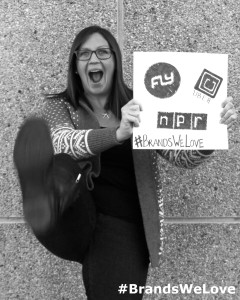
"Although Uber has been around for a number of years it seems 2014 was the brand's breakout year. It has infiltrated itself into the lifestyle (and vocabulary) of most 20 and 30-somethings living in metropolitan areas. The convenience, reliability and cost of using Uber has changed how I operate. I use it to get almost anywhere on the weekends and has become the only way I get to and from the airport.
I was first introduced to Flywheel in 2013 but my love for the brand was solidified in 2014. As cliché as it may sound, I love how they make fitness fun, and the brand experience is on point from start to finish. Branded workout experiences create a sense of community and belonging that you can't necessarily find at a larger gym. And Flywheel has been one of the brands at the forefront of this movement and I love watching it grow. Although a very established brand, I never truly understood the value of this brand until 2014.
Prior to this year I only thought of NPR as a great place to learn about new music/bands but that changed this year. I have also come to love more than just the information they report but also the hosts of NPR. I have started to feel a comfort and trust in them, two things every brand strives for."
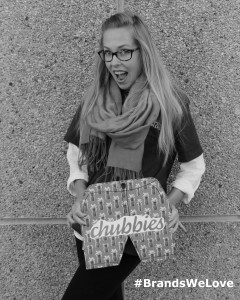 Our next brand fan is Kelsey and her favorite brand, Chubbies!
Our next brand fan is Kelsey and her favorite brand, Chubbies!
"The Chubbies brand is a success because they don’t just dabble in this “bro” persona, they embrace if from all angles. In short (pun intended) the Chubbies experience is unexpectedly inspiring.
Though they’re selling men’s clothing, the Chubbies concept is genderless and timeless- fearlessly seize the day in shorts and a smile!"
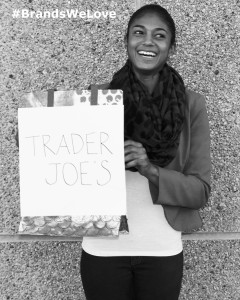 Rounding out the first day of our week is Christa, who chose Trader Joe's as the Brand She Loved in 2014.
Rounding out the first day of our week is Christa, who chose Trader Joe's as the Brand She Loved in 2014.
"I love the brand because I enjoy the shopping experience, the friendly staff and plentiful samples. I'm also never let down by the tasty food and low prices!"
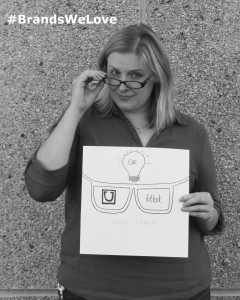 Our first brand fanatic for day 2 is Beth Anne, whose favorite brands include Warby Parker, GE, Uber and Fitbit:
Our first brand fanatic for day 2 is Beth Anne, whose favorite brands include Warby Parker, GE, Uber and Fitbit:
"Warby Parker – They take a very innovative approach to the eyeglass market with their “one for one” policy. It’snew way to engage an audience and make the process fun and convenient.
GE – They are a leader in the industrial Internet revolution. PR placements and ads are really interesting – they advance the GE brand and reinforce its reputation as an innovator.
Uber - It has been a game changer. It's interesting to see what providing a convenient choice can do to a seemingly stagnant industry and service. Fitbit – They are making fitness more personalized and syncing with technology."
We’re continuing day 2 with Karlie and her choice, Jeep!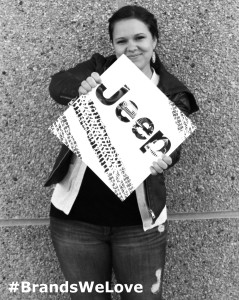
“Jeep is my absolute favorite brand. Not only is there a Jeep for every lifestyle, but Jeep does an amazing job of building them so that the everyday person can repair them.
Most brands make their products so that only they can make repairs, thus bringing in more revenue. Jeep knows their audience is "do-it-yourself-ers" so they've pretty much made their vehicles like a Mr. Potato Head. If you want to add or modify anything, there are already holes and guides built into the stock frame to show you where to put it. They've also taken great care to make products that mold to your everyday life.”
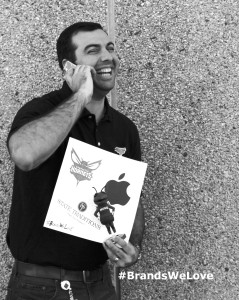 Rounding out Tuesday’s edition of #BrandsWeLove is Matt, who picked a trio of his favorite brands – Apple, the Charlotte Hornets and State Traditions!
Rounding out Tuesday’s edition of #BrandsWeLove is Matt, who picked a trio of his favorite brands – Apple, the Charlotte Hornets and State Traditions!
“Apple - They once again showed the world how powerful the brand can be with the launch of their new products. It always amazes me when a brand has such loyal customers and yet keeps pushing the limits and not resting on their laurels. They could just release similar products with minor upgrades every now and then and go count their cash. Instead, they try and change the game with each launch, despite the risks.
Charlotte Hornets - The Charlotte Hornets brand is one of the most powerful and well-respected in the Charlotte area. Their return in 2014 saw are resurgence in passion for the NBA in the city, and also gave residents another sense of hometown pride.
State Traditions - This is a brand that not only has great products and one that inspires great brand loyalty from its customers, but it realizes the value of small business and helping them grow. Their website recently opened the "ST Market" where they feature local artists and businesses right next to the State Traditions products. They know how their consumers value well-made products and will be happy to support smaller businesses when they can see the potential and the quality produced.”
Day 3 of #BrandsWeLove week starts appropriately with Ben and a company that has helped many people get their day off to a good start, Rush Coffee!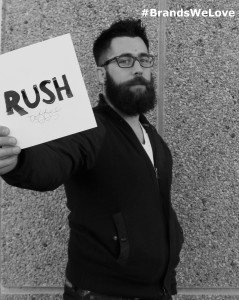
“Because they have such an awesome environment for coffee, work and conversation. They also have an epically beneficial phone app and their coffee is money.”
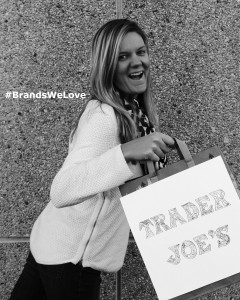 Cathleen is our next brand fanatic for day 3, with her #BrandsWeLove selection – Trader Joe's!
Cathleen is our next brand fanatic for day 3, with her #BrandsWeLove selection – Trader Joe's!
“Every time I go into the store, the staff is so friendly. They talk to me personally and are genuine. The products are always on point as promised, the store is always neat and organized and the environment is consistent.”
A very special final post for day 3 of #BrandsWeLove week, RJ chose brands that are very close to his heart and the heart of Addison Whitney -Blushing  Hair and Makeup Styling, The Crafted Pop, and Trees & Ink Printique!
Hair and Makeup Styling, The Crafted Pop, and Trees & Ink Printique!
"The brands I loved this year are our own little brands - I love small business. They are so exciting. I'm excited for the brands created by Addison Whitney team members and family members.”
It’s Day 4 of #BrandsWeLove week, and Jennifer’s classic brand she 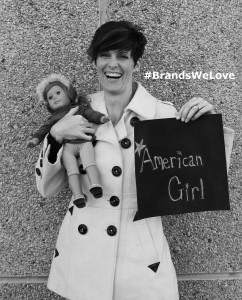 loves, American Girl, is starting the day!
loves, American Girl, is starting the day!
“I WISH American Girl had been around when I was growing up – I wouldn’t have to live vicariously through my daughter!
From its beginnings, the American Girl has sought to bring historical awareness and now 21st century issues into homes through its dolls. American Girl celebrates girls – their individual personalities, their strengths and weaknesses, overcoming trials.Each doll offers an opportunity for girls (and parents!) to be immersed in not only the doll’s story, but an opportunity to learn more about themselves and the world happening around them. The brand delivers consistently – at every touch point you can see their mission coming to life.”
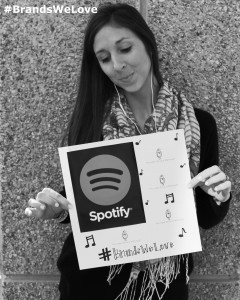 Kaitlin continues day 4 rocking and rolling with her two #BrandsWeLove picks, Spotify and Hilliard Studio Method (HSM)!
Kaitlin continues day 4 rocking and rolling with her two #BrandsWeLove picks, Spotify and Hilliard Studio Method (HSM)!
“Spotify: Although this music streaming service has been around since 2008, I believe it became most popular this year! I heard a lot of friends and coworkers talking about Spotify, but never thought to give it a chance. I finally made the move and downloaded it in August of this year. I was blown away with how many old songs and artists it featured. I went from listening to the “Free” application to subscribing and paying per month for unlimited searches, playlists and “skips.” I have been so satisfied with Spotify and would certainly agree that it is one of the most popular music streaming services to date. I am extremely thankful for Spotify these days –I get to listen to ENDLESS Christmas music all day long!
HSM: I had a few friends rant and rave about HSM in 2013, but it wasn’t until I was preparing for my May 2014 wedding that I decided to start. I went into my first class in January of 2014 a little unsure and left feeling exhausted and totally excited! I had finally found a total-body workout that pushed me to my extreme limit. I continued to become an HSM-obsessed client and was going to class at least 6 times a week! I looked the best I ever had at my wedding and have continued to maintain my obsession with this studio and plan to do so forever!”
Rachel is up next with some great choices to add to the #BrandsWeLove library! The brands she loved in 2014 are Honda, Bed Bath & Beyond,Trader Joe's & Cheerios!
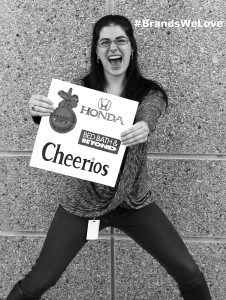 “Honda: I bought my first car this summer and not only did I walk away with a great price (they had great deals for recent grads), I still get occasional calls from the guy who sold it to me, asking how everything's working!
“Honda: I bought my first car this summer and not only did I walk away with a great price (they had great deals for recent grads), I still get occasional calls from the guy who sold it to me, asking how everything's working!
Bed, Bath & Beyond: While some other stores failed to stock even a single pack of Chanukah candles, I found a beautiful selection at BB&B, as well as a few other items I didn't even know I needed! The service was also very friendly and on top of their game at a very busy shopping period.
Trader Joe's: I just recently re-discovered Trader Joe's after a long period of living too far from one to shop there. They have such great, healthy food selections at very competitive prices. I'm falling in love all over again!
Cheerios: Cheerios rocked it this year with heart-warming, socially progressive commercials featuring low-income parents working multiple jobs, multi-racial families, gay couples, and people with disabilities. Though the ads are ultimately selling cereal, they are also offering a more real and diverse picture of American life than is typically seen on screen.”
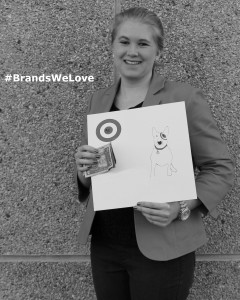 The TGIF edition of #BrandsWeLove kicks off with Lily and a great choice for her favorite brand, Target!
The TGIF edition of #BrandsWeLove kicks off with Lily and a great choice for her favorite brand, Target!
“They offered me free shipping during the holidays and sent me a replacement product immediately when they had packaged the wrong one!”
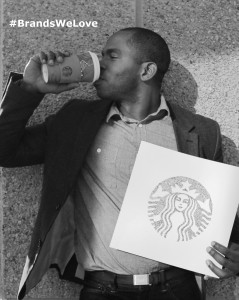 Last, but definitely not least, is Chris, who closes out #BrandsWeLove by choosing Starbucks for his favorite brand, which we think many people would agree with!
Last, but definitely not least, is Chris, who closes out #BrandsWeLove by choosing Starbucks for his favorite brand, which we think many people would agree with!
“Starbucks is quietly about so much more than coffee. While they sell what we use for energy, they fuel so much more. As "the third place" they are not home nor work but feel just as comfortable.
It has been clear they want to stay that way as any negative experience I've had has quickly been turned into a positive one by their staff. Their mobile app is one of the few that I use often as well.”
Follow us on Twitter @AddisonWhitney or join the conversation on Facebook and Google+
3 Brands Poised for Success in 2015
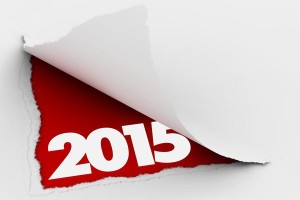 Every brand wants to go into a new year with momentum, knowing their brand has the strength to make it the best year possible, but some have a brand strategy that is better suited to succeed than others.
Every brand wants to go into a new year with momentum, knowing their brand has the strength to make it the best year possible, but some have a brand strategy that is better suited to succeed than others.
Here are three brands who, through their actions in 2014 and the potential they show as the new year approaches, we feel have best set themselves up to be some the best in 2015:
This brand out of El Segundo, California that makes Nabi, a line of children’s tablets, has experienced an astounding 158,957 percent three-year growth, topping out at over $195 million in revenue in 2013. It led the company to the top 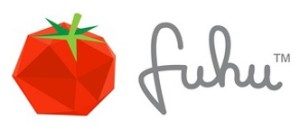 spot on the Inc. 5000 list of fastest-growing private companies in the United States for the second year in a row, a feat only achieved once before, in addition to being named America’s Most Promising Company for the year by Forbes.
spot on the Inc. 5000 list of fastest-growing private companies in the United States for the second year in a row, a feat only achieved once before, in addition to being named America’s Most Promising Company for the year by Forbes.
But what has allowed for such incredible growth and what sets it up for continued success in 2015 is Fuhu’s ability to take a very niche market and expand its offerings to cover all of the potential consumer and market areas. For instance, they offer branded accessories such as sports logo decals and Nabi-brand chargers, along with a partnership to sell special-edition versions of their tablets with brands such as Disney and Nickelodeon.
Whenever a brand can break out of a single-product offering they are more likely to sustain long-term success. When those additional products all tie in to the original and contribute to strengthening the overall brand strategy, well that’s just an added bonus that Fuhu has earned.
Franchises are the next wave of brand growth, with brands seeing this avenue as the best way to expand their reach. And no company has embraced franchising better than Anytime Fitness, which earned the top spot on Entrepreneur Magazine’s Franchise 500 list in 2014.
![]() Not only do their locations have sound business footing, they have capitalized on the nation’s thirst for healthy options and promoting a healthy lifestyle. Additionally, their concept of 24/7/365 availability works into the daily life of the person who wants to stay healthy, but needs the flexibility to do it on their own schedule.
Not only do their locations have sound business footing, they have capitalized on the nation’s thirst for healthy options and promoting a healthy lifestyle. Additionally, their concept of 24/7/365 availability works into the daily life of the person who wants to stay healthy, but needs the flexibility to do it on their own schedule.
They have over 2,500 locations and sport over 1.9 million members, with goals to open 1,500-plus units in the next five years. This growth, along with the strong brand loyalty shown by its members (more than 1,400 have tattooed the company’s logo on themselves to represent a personal accomplishment), point to another outstanding year for the folks at Anytime Fitness.
Amazon is proof that the most successful companies never stop evolving. Already the largest internet-based company in the United States with over $74 billion in revenue for 2013, but they are not willing to sit back and let the brand coast in the coming years.
 They too know the benefit of branching out with your brand, with original products, hotel booking site, streaming video services, food delivery services, and more all on deck for potential 2015 launches. They have also entered into the media creation realm, with at least seven new shows set to debut in 2015, go along with the already-successful Kindle, Amazon Prime and recent acquisition of Zappos.
They too know the benefit of branching out with your brand, with original products, hotel booking site, streaming video services, food delivery services, and more all on deck for potential 2015 launches. They have also entered into the media creation realm, with at least seven new shows set to debut in 2015, go along with the already-successful Kindle, Amazon Prime and recent acquisition of Zappos.
This touches on another branding best practice – Amazon can look to expand its product offering because it is the best at what it was originally created to do. People around the world know Amazon’s brand for its outstanding success in the past, and therefore the brand equity is there already to test the waters, knowing that anything with the Amazon name on it has a built-in brand ambassador network.
Sources:
- https://www.fool.com/premium/supernova2015/disruptor.aspx
- https://www.forbes.com/most-promising-companies/list/
- https://www.inc.com/profile/fuhu
- https://www.inc.com/magazine/201409/lindsay-blakely/inc.500-2014-number-one-fastest-growing-company-fuhu-growth-secrets.html?cid=readmore
- https://www.entrepreneur.com/article/230291
- https://www.nydailynews.com/entertainment/tv/amazon-reveals-2015-pilot-season-lineup-article-1.2006787
Case Study Wednesday: Procter & Gamble
Case Study Wednesday:
Procter & Gamble
As one of the leading global branding firms, Addison Whitney is behind some of the world’s strongest and most iconic brands. We’re proud of the work we do for all of our clients and love sharing our stories.
That's why we've launched "Case Study Wednesday", where we highlight one of our amazing clients and the work we have done with them. To learn more about our work, click here.
This week, we are featuring our work with Procter & Gamble:
Addison Whitney has been a naming and strategy resource for Procter & Gamble (P&G) for more than 15 years, and we've built a strong relationship with multiple divisions within the organization.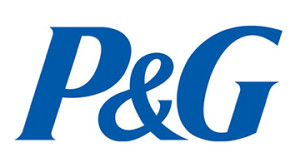
We have worked on for a number of P&G's most iconic brands, and here's a snapshot of a few of the brands we've created.
Deep Sweep
Oral-B, owned by P&G, developed a product that brought new technology to the power brushing category. The primary objective of its new technology was to significantly broaden the appeal of power brushing among current manual brush 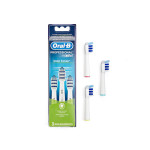 users. Oral-B sought a naming strategy for this new technology that was intuitive and ownable.
users. Oral-B sought a naming strategy for this new technology that was intuitive and ownable.
Using information discussed in a creative strategy workshop, we developed the name Deep Sweep. The new name captured what deep cleaning users would get from the new product and spoke not only to the benefit, but also to the method of the action as well.
UnderJams
For older children, bedwetting can be an emotional and uncomfortable situation, which is why P&G developed a new line of absorbent disposable underwear for children aged 5 to 12 years. The new product looks 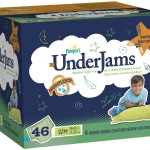 and fits like ordinary underwear, but provides the protection a child might need at home or during a sleepover. It was very important that the new product's name communicate discretion so that children would feel included and normal.
and fits like ordinary underwear, but provides the protection a child might need at home or during a sleepover. It was very important that the new product's name communicate discretion so that children would feel included and normal.
The name UnderJams was developed to convey both function and inclusion. "Under" suggests discretion and is descriptive of the underwear-like fit. "Jams" sounds exciting and captures the personality of the target audience.
Teams Involved:
Follow us on Twitter @AddisonWhitney or join the conversation on Facebook and Google+
Case Study Wednesday: Carnival Cruise Lines
Case Study Wednesday:
Carnival Cruise Lines
Addison Whitney’s ongoing relationship with Carnival Cruise Lines is a testament to our client-first mentality. We’ve supported the cruise line with projects ranging from bar and restaurant identities to social and recreational brands. These branded experiences can be found on several Carnival ships.
RedFrog Pub and ThirstyFrog Red Lager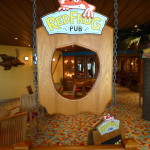
Our verbal team named a Carnival restaurant RedFrog Pub to evoke a fun, island feel. Our visual team then created logos for both RedFrog Pub and ThirstyFrog Red Lager, the restaurant’s private label beer. To ensure a consistent look and feel throughout the venue, we also designed the restaurant’s menus.
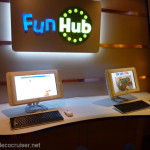 FunHub
FunHub
Not only did we create the exciting name FunHub for Carnival’s exclusive state-of-the-art shipboard intranet portal, we also designed its colorful logo. Both were incorporated into the website, netbook rentals and various other collateral materials.
SportSquare
Our verbal team also created the name SportSquare for the energetic, physical and social area of the ship. Our designers created a bright, vivid logo to bring the name to life and reflect the positive atmosphere of the area. Carnival subsequently asked us to brand the elements within the recreational area, resulting in the name and logo for Sky Course and the logo for Sky Fitness.
Teams Involved:
Visual Branding Verbal Branding
Follow us on Twitter @AddisonWhitney or join the conversation on Facebook and Google+

